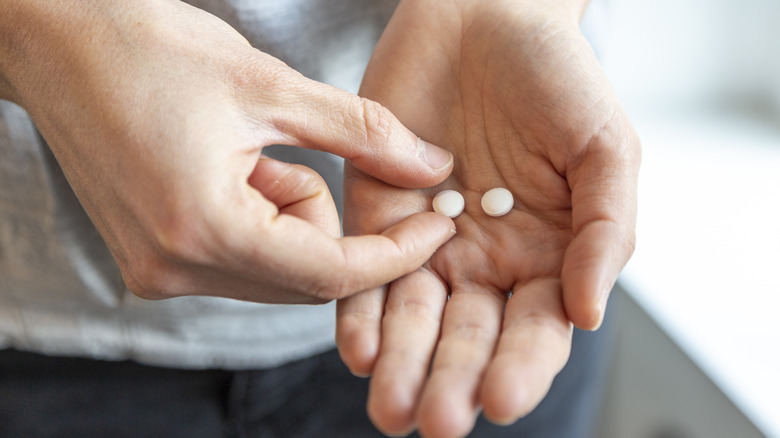The Link Between Endometriosis And Chronic Pain Explained
Chronic pain is a feeling of physical discomfort that usually lasts more than three to six months and can persist even after an injury or underlying medical condition has healed (via the Cleveland Clinic). It can be a condition in and of itself that can last in the nervous system for an extended period. Chronic pain can result from problems in the nervous system but can also be caused by underlying medical conditions, such as arthritis, fibromyalgia, and cancer.
Endometriosis, on the other hand, is a condition where chronic pain is evident. According to the Mayo Clinic, it happens when tissue similar to the lining of the uterus, known as the endometrium, grows on the external surface of the uterus. In other words, this tissue can grow on or under the ovaries, fallopian tubes, and the tissue lining the pelvis. Symptoms of endometriosis can include chronic pelvic pain, painful periods, pain during intercourse, heavy menstrual bleeding, and infertility, among others. However, some women with endometriosis may not experience any symptoms at all. With that being said, let's take a look at how the two are linked.
Endometriosis and chronic pain
The endometrial tissue that grows outside the uterus still behaves like normal endometrial tissue, thickening and shedding in response to hormonal changes during the menstrual cycle, explains the Mayo Clinic. However, because it is outside the uterus, the blood and tissue shed during menstruation have no way to exit the body, leading to severe pain during a period.
Endometrial tissue can also grow on or near nerves, which can cause chronic pain signals to be sent to the brain, says a 2021 study published in the journal FASEB Bio Advances. Additionally, the scarring occuring with endometriosis can cause pain. In other words, as the endometrial tissue grows and breaks down, it can form scar tissue that can bind organs together, causing pain, per NOVA IVF Fertility.
In some cases, endometriosis can cause pelvic floor dysfunction. It occurs when the pelvic floor muscles start tensing up due to the chronic pelvic pain they're experiencing, as per the Vital Health Endometriosis Center.
How chronic pain caused by endometriosis is treated
Chronic pain caused by endometriosis can take some time to manage. After all, treatment may depend on the severity of your symptoms, as per the Mayo Clinic. Plus, treatment options could take some trial and error to find the most effective treatment plan and may need to be adjusted over time. Nonetheless, treatment typically involves a combination of pain management techniques and targeted treatment of the endometriosis itself. This can include over-the-counter pain relievers, such as ibuprofen. On the other hand, muscle-relaxing medications and nerve injections may be necessary, per the experts at the Brigham and Women's Hospital. In addition, physical therapy might be necessary to strengthen the bottom pelvic muscles.
Hormonal therapies are also a common treatment option for endometriosis-related chronic pain. In turn, they help alter the hormonal fluctuations that cause endometrial tissue to grow and may help reduce pain.



